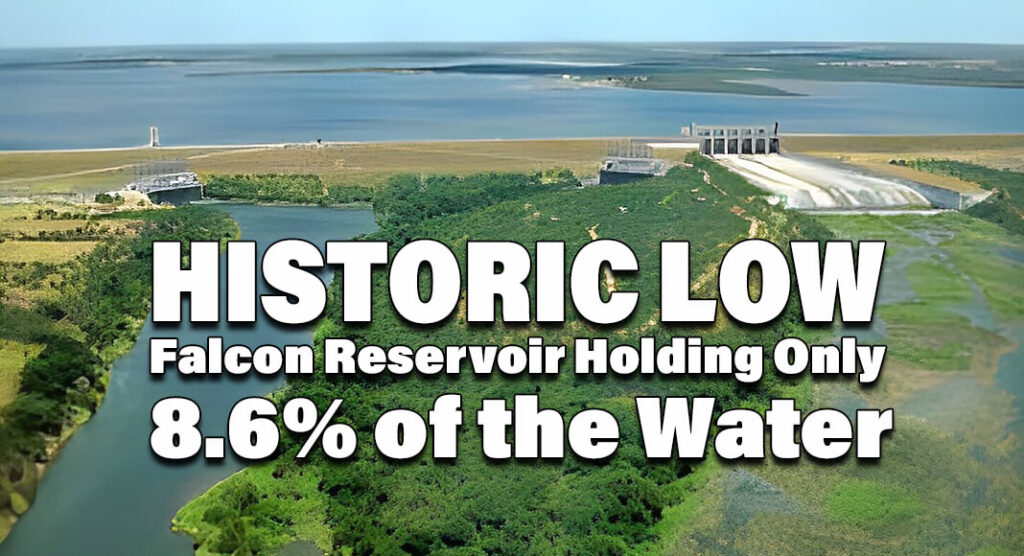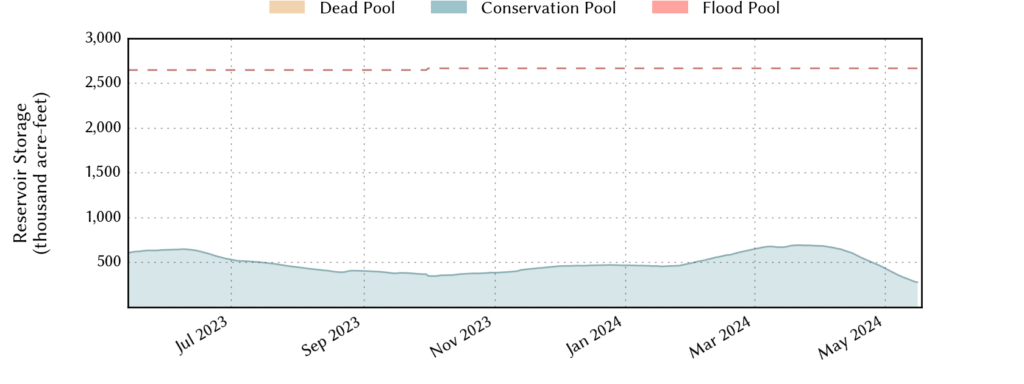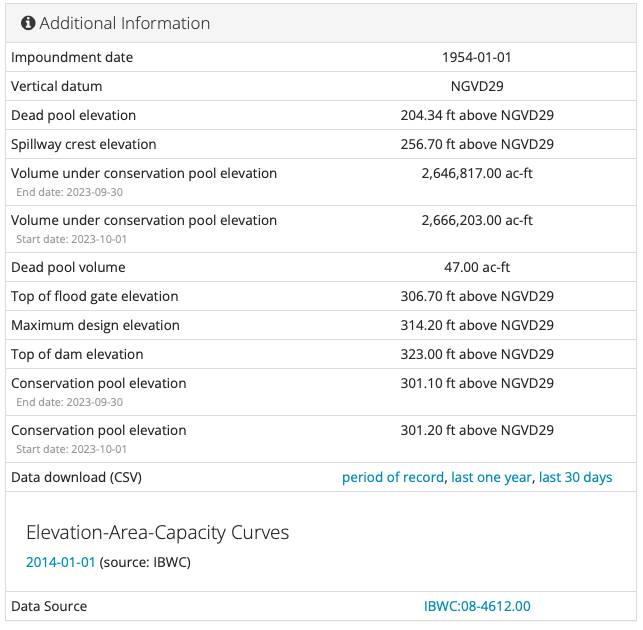
Texas Border Business
Texas Border Business
As of May 16, 2024, Falcon Reservoir is alarmingly low, holding only 8.6% of its total capacity. This vast body of water, straddling the Texas-Mexico border, is now a shadow of its former self, reflecting broader environmental challenges affecting the region.
Falcon Reservoir’s dramatic decline in water levels is part of an ongoing trend aggravated by consecutive dry summers and minimal rainfall. The reservoir was at 21.4% capacity just a year ago, already concerning but significantly better than today’s levels. The reservoir’s current state, with water levels nearly 47 feet below its full pool of 301.20 feet above mean sea level, stresses the severity of the situation.

The reservoir was created in 1954 to manage water resources from the Rio Grande, serving purposes like flood control, water conservation, and hydroelectric power generation. However, recent conditions have placed immense stress on its capacity. As the water level continues to drop, the implications for local ecosystems, agriculture, and communities reliant on this water source are profound.
The International Boundary and Water Commission (IBWC) oversees the reservoir’s operations and has closely monitored these levels. Their data reveals a blunt decline, with the reservoir’s storage dropping precipitously over the past months. This drop is a statistical anomaly and reflects broader regional climatic patterns.

Image Source: waterdatafortexas.org
Efforts to address the water scarcity at Falcon Reservoir are ongoing, but they face significant challenges. Climate predictions suggest continued dry conditions, and recovery will be slow and uncertain without substantial rainfall. Local authorities and international partners are urged to collaborate on sustainable water management strategies to mitigate the environmental and local populations’ impact.
Falcon Reservoir’s current water level is a critical issue demanding immediate attention. The reservoir’s depletion is a stark indicator of the region’s broader environmental crises, requiring coordinated efforts to ensure the sustainability of this vital resource.

Lake Falcon straddles the border of Texas and Mexico. Texas holds rights to 58.6% of the total conservation capacity by treaty. The fraction of the actual storage allocated to Texas is determined biweekly by the International Boundary and Water Commission (IBWC). The IBWC serves as the legal repository of data related to this lake for treaty purposes, and official versions of the datasets should be obtained directly from them. The conservation capacity is based on 58.6% of the total, with the conservation storage adjusted biweekly based on Texas’s share.
Falcon Lake is located in North America, straddling the border between the United States and Mexico. Specifically, it is situated on the Rio Grande, with parts of the lake in Texas, USA, and Tamaulipas, Mexico. The lake was created by the Falcon Dam, which was constructed in the early 1950s for water conservation, irrigation, and hydroelectric power generation. The dam and lake are part of the Falcon International Reservoir, a significant resource for both countries.














